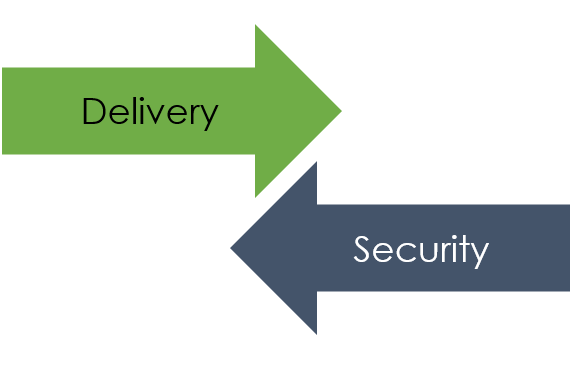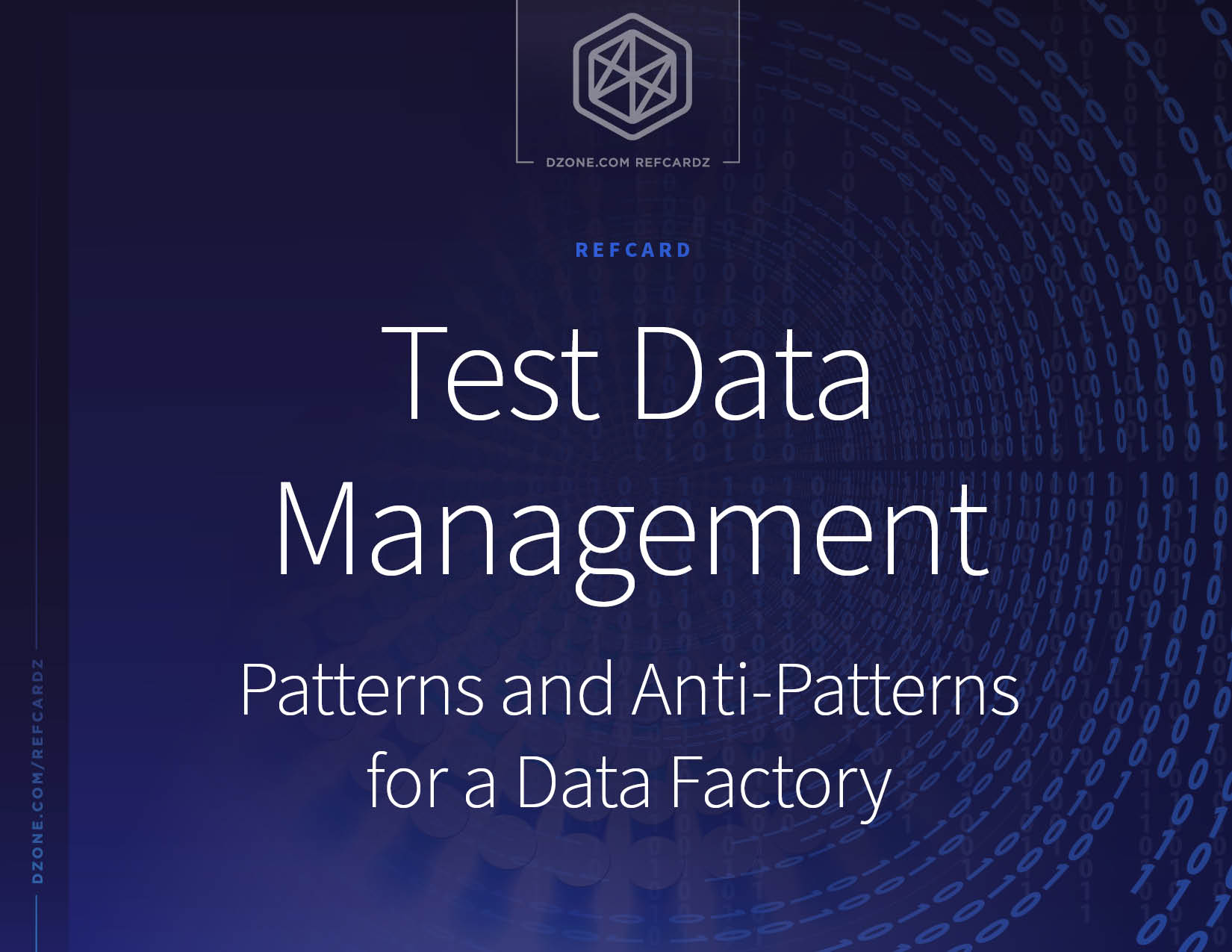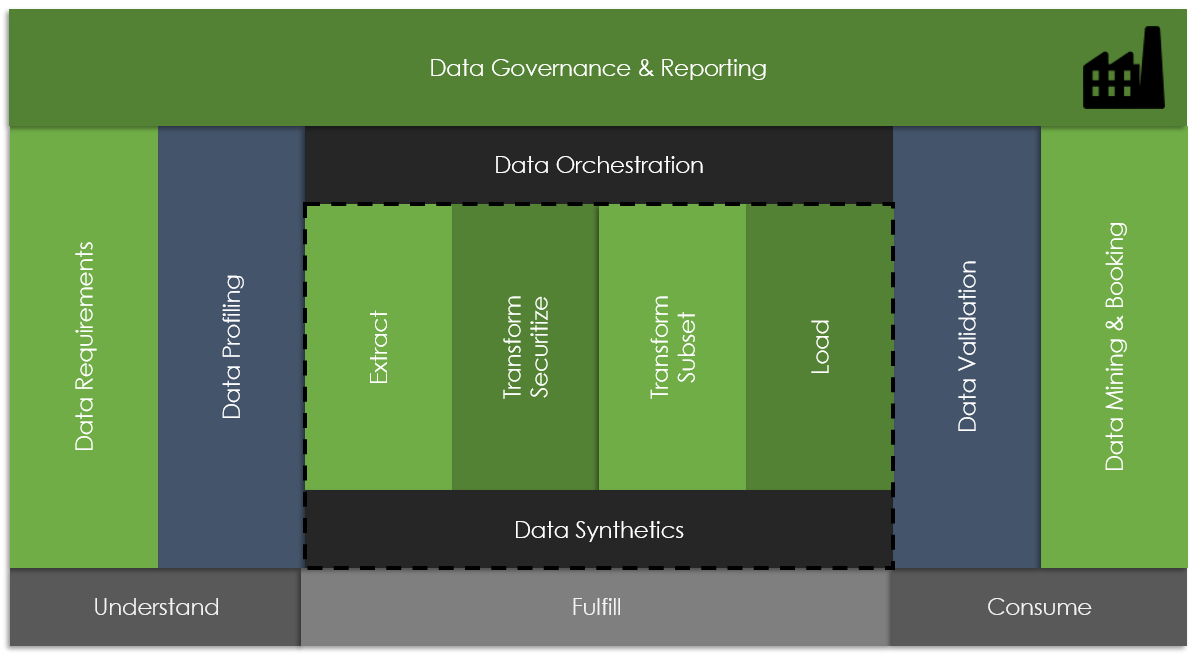With the above in mind, let us now explore the key facets of test data management, exploring the primary objectives and goals of TDM, best practices (referred to as “patterns”) supporting TDM, and behavior that tends to be counter-productive (“anti-patterns”).
Data Requirements
|
GOAL |
The data provisioned should align with our test needs |
|
PATTERN |
Ensure data requirements are not forgotten |
|
ANTI-PATTERN |
Capturing test data requirements too late |
Pattern
Ensure data requirements are not forgotten (or identified too late). For each user story, ensure that your data needs (tasks) are captured and articulated effectively.
Story-001 Data-Task:
I need Loan Data,
Where Customer is Female &
Loan Created between:
1/JAN/2021 to 31/JULY/2021
Benefits
- Re-work avoidance
- Timely preparation of environments
- Testability
Anti-Pattern
Capturing test data requirements too late. Identifying data requirements after the environments are provisioned will invariably result in long delays and inhibit broader Dev, Test, and QA endeavors.
Example data profiling report
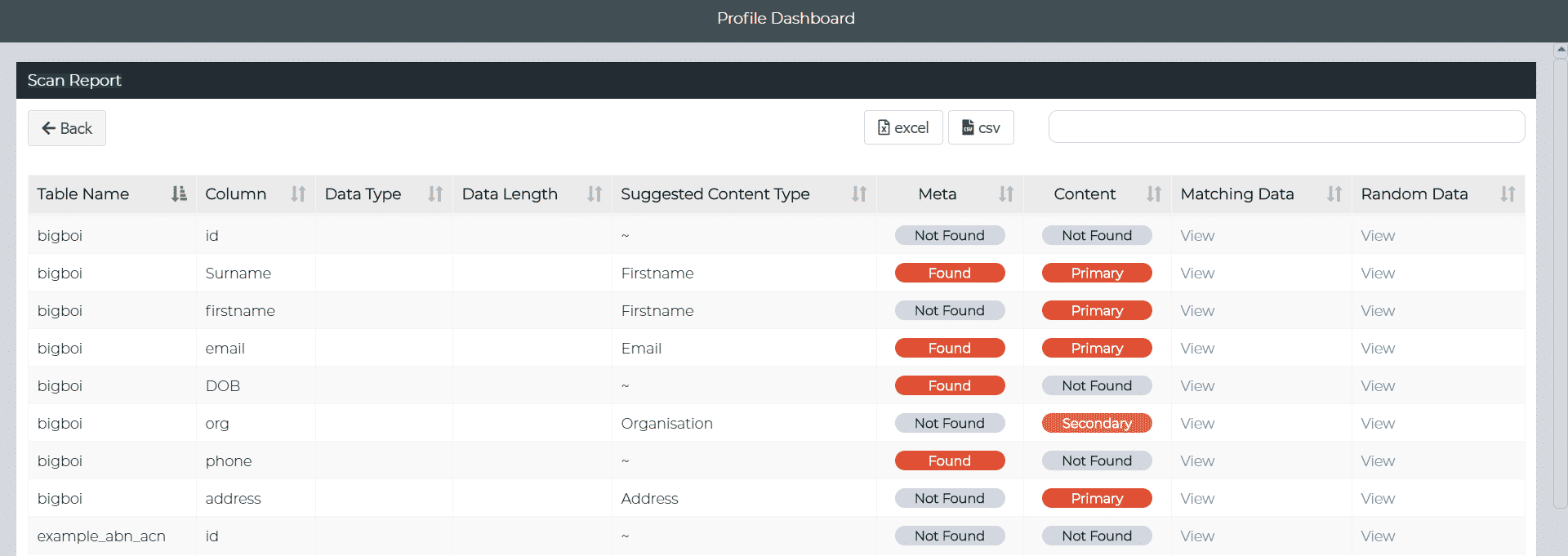
Automated Data Profiling
|
GOAL |
Better understand our platform data |
|
PATTERN |
Implement “automated” profiling methods to promote data literacy |
|
ANTI-PATTERN |
Profiling data manually |
Pattern
Implement “automated” profiling methods to promote data literacy, i.e., ensure an understanding of your data structure and content, including the discovery of schemas, tables, columns, relationships, constraints, and sensitive risks like personally identifiable information (PII).
Examples of PII Risks
- Full name
- Address
- Email
- Phone number
Benefits
Data literacy will contribute to SDLC delivery activities such as development, testing, and support tasks like data synthetics.
“Data risk” literacy will benefit those involved in compliance and security endeavors and support tasks like data masking.
Anti-Pattern
Profiling data manually. It is not uncommon for the data sources to have thousands of columns and billions of data points. Manual profiling methods, like team workshops, will probably fail for anything but the simplest of data structures.
Data Synthetics
|
GOAL |
Require “fake data” for developer and test activities |
|
PATTERN |
Build synthetic test data for the purpose of development and testing |
|
ANTI-PATTERNS |
- Profiling data manually
- Assuming synthetic data is suitable for all test phases
|
Pattern
Build synthetic (i.e., fabricated, fake, or dummy) test data for the purpose of development and testing.
Note: There are two main reasons why synthetic test data is generated: (1) to avoid using “production” data that may contain sensitive information and (2) to “build” data that may not exist in production, for example, data related to a new product or story. Fake data is particularly useful in the lower test environment or early phases of the test lifecycle, e.g., unit and system.
Benefits
- Easy to share and reuse
- Rapid provisioning
- Improves security as it avoids the risk of “production data” being used in earlier phases of the lifecycle
Anti-Patterns
Using fake data in higher environments. Data, and its underlying structure, is rarely simple, and at times, it can be incredibly complex. This includes relationships between the tables and columns, which can be managed outside of the database itself. It is not difficult to create data that is not “fit for purpose” and does not match the platform business rules.
Don’t assume that “synthetic data” is universally suitable for all test phases. This includes higher environments like SIT, UAT, and performance. The value of “fake data” will usually diminish later in the lifecycle as acceptance and cross-platform integration coverage increases.
Data Sub-Setting
|
GOAL |
Keep data small and easy to provision |
|
PATTERN |
Employ small data footprints |
|
ANTI-PATTERN |
Loose or weak subset design |
Pattern
Data sub-setting is the act of reducing your data footprint by selecting data based on a “repeatable” criterion. By employing small data footprints, the DevOps teams will find it easier to provision data, share data, and use standalone methods like containers or sandpits.
Simple Example:
Only use data related to Customers
Where name beginning with C%
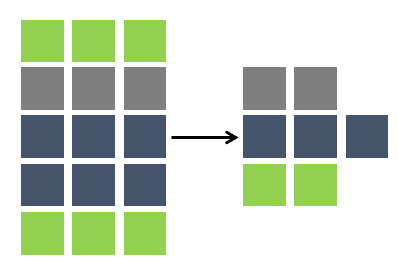
Benefits
- Less storage costs
- Reduced batch/processing time
Anti-Pattern
Loose or weak subset design. Sub-setting needs to be “precise;” otherwise, the process will result in “required” data going missing and/or relationships being lost. A loss of data integrity is likely to break business logic and cause the platform to cease functioning.
Data Virtualization
|
GOAL |
Keep data small and easy to provision |
|
PATTERN |
Identify data “deltas” or “differencing” between the application “source of truth” and local copy |
|
ANTI-PATTERNS |
- Use de-sensitized data in source
- Transform the delta source
|
Pattern
Data virtualization is a modern, and somewhat safer, alternative to sub-setting that identifies data “deltas” or “differencing” between the application “source of truth” and your local copy.
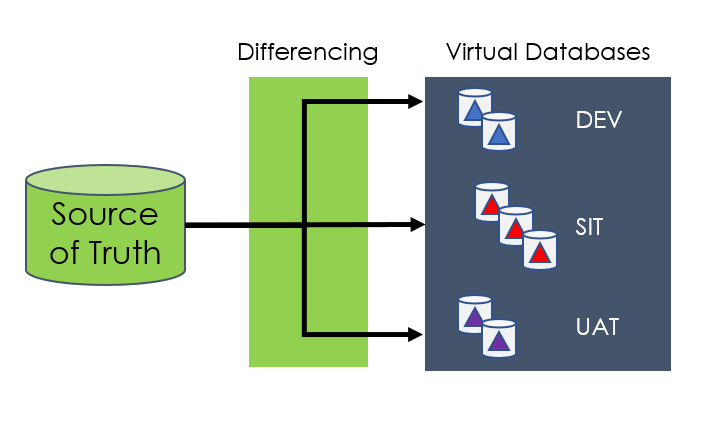
Tip: Think of the virtual copy as a snapshot of the changes (deltas) made by the development or test team. Unchanged data still resides back in the “source.”
Benefits
- Rapidly provision copies of your DB for Dev and Test
- Small storage footprints
Anti-Patterns
Using de-sensitized data in source. Virtualizing the data means that the teams still have access, indirectly, to the original source. If virtualization is used, then ensure the sensitive “source” data has been obfuscated.
Transforming the delta: If the data needs to be transformed, then transform the source. Trying to transform the virtualized DBs can cause the virtual copies to explode in size (due to over delta-ing), losing their original portability value.
Data Masking
|
GOAL |
Real data sensitivity should be obfuscated and non-reversible |
|
PATTERN |
Dataset is copied but the PII and/or sensitive data has been obfuscated |
|
ANTI-PATTERNS |
- Securing too much
- Securing inconsistently
|
Pattern
Data masking is a data security technique in which a dataset is copied but the PII and/or sensitive data has been obfuscated.
Ideally, obfuscated data should be non-reversible to further tighten security, and for the benefit of DevTest, it should still look and feel production-like.
For example: Replace First name
Simon with John
Mary with Sally

Benefits
- Aligns to privacy regulations, e.g., GDPR, HIPPA, and PCI
- Helps QA/Test by looking and behaving like production
Anti-Patterns
Securing too much. When you mask, there is the inevitable risk of breakage or loss of integrity. As such, keep your masking scope “tight,” i.e., focus on primary PII and don’t be tempted to “over secure” low value artifacts. Less is more (and quicker).
Securing inconsistently. If you change “Simon” to “John” here, then ensure you change “Simon” to “John” there. Inconsistent masking within an application or across applications is likely to cause serious data integrity issues.
Data Encryption
|
GOAL |
Real data sensitivity should be obfuscated and reversible |
|
PATTERNS |
- Obfuscate information so that it can’t be read
- Decipher/reverse engineer data using a secret key
|
|
ANTI-PATTERNS |
- Using encryption where encryption is not sensible
- Breaking formatting rules
|
Pattern
Use data encryption as a method of (1) obfuscating information so that it can’t be read and (2) being able to decipher (reverse engineer) that data using a secret key.
Note: There are various industrial-strength methods, for example: DES, AES, and RSA. There are also weaker/lighter methods like cyphering.
Example Encryption:
Input Data: Smith
Output Data: BPMtbFk5BrZ1OnpwS8vpvw==
Note: AES128 with 16-digit secret.
A primary differentiator with masking is the option to reverse the data later. This is potentially useful if the data was encrypted to support safe transfer, for example, to a trusted site.
Benefits
Anti-Patterns
Encryption where encryption is not sensible. A primary issue with encryption is that data no longer looks production-like, i.e., the data loses its shape. For example: “Jones” doesn’t look like “XPMtbFk7npwS8vpvw==”. Only use encryption if pattern breakdown is acceptable.
Breaking formatting rules. Another risk of encryption is that data may be transformed into a format that doesn’t support the application logic or contradicts table column definitions or constraints — a transformation that would likely result in application breakage and non-useability.
Data Validation
|
GOAL |
Validate that sensitive data has been removed |
|
PATTERN |
Implement a screening process to ensure sensitive data protection |
|
ANTI-PATTERN |
Manual inspection |
Pattern
With thousands to tens of thousands of columns, the risk of missing PII is likely. Implement a screening process to ensure the sensitive data has been remediated and has not slipped through the net.
Benefits
Anti-Pattern
Manual Inspection. Manual inspection of point data isn’t ideal, nor reliable, especially when you are dealing with millions of data-point changes. Ideally, you need to use automated methods to demonstrate that the broader “production patterns” are now absent.
Data Views
|
GOAL |
Data should be easy to consume and find — and free of contention |
|
PATTERN |
Implement methods that simplify the real-time viewing of your data |
|
ANTI-PATTERN |
Use a data list |
Pattern
A lot of time can be wasted in finding the correct test data for your test work. This process can be further “disadvantaged” by others using the same data and then altering it unexpectedly.
Implement methods that simplify the real-time viewing of your data, mining for “fit-for-purpose” pools of test data. Also, it is important to help “reserve” data pools to limit opportunity for overwrite.
Example:
Create a Data View called Data-Pool1
Where Customer Last Name Like C%
Gender is Female AND
Loan Created between:
1/JAN/2021 to 31/JULY/2021
Assign Data-Pool1 to Tribe1
Benefits
- Find data instantly
- Avoid data-related defects (overwrite)
Anti-Pattern
Use a data list. Using a list (for example, a spreadsheet) to maintain a set of data points for testing is a common but somewhat stagnant practice. Lists are slow to build; they usually represent a point in time (“time of extract”) that users will gravitate toward the same data points (see top of Refcard). Typically, they get out of date quickly due to the data or testable requirements changing.
Data Orchestration
|
GOAL |
Data operations should be streamlined and self-serviceable |
|
PATTERN |
Identify key test data operations |
|
ANTI-PATTERNS |
- Playing “the hero”
- Selective automation
|
Pattern
Data operations are often the slowest activities when it comes to preparing your environments. This is partly due to the date complexity, likelihood of breakage, and the data SMEs often being busy single points of failure (SPOF).
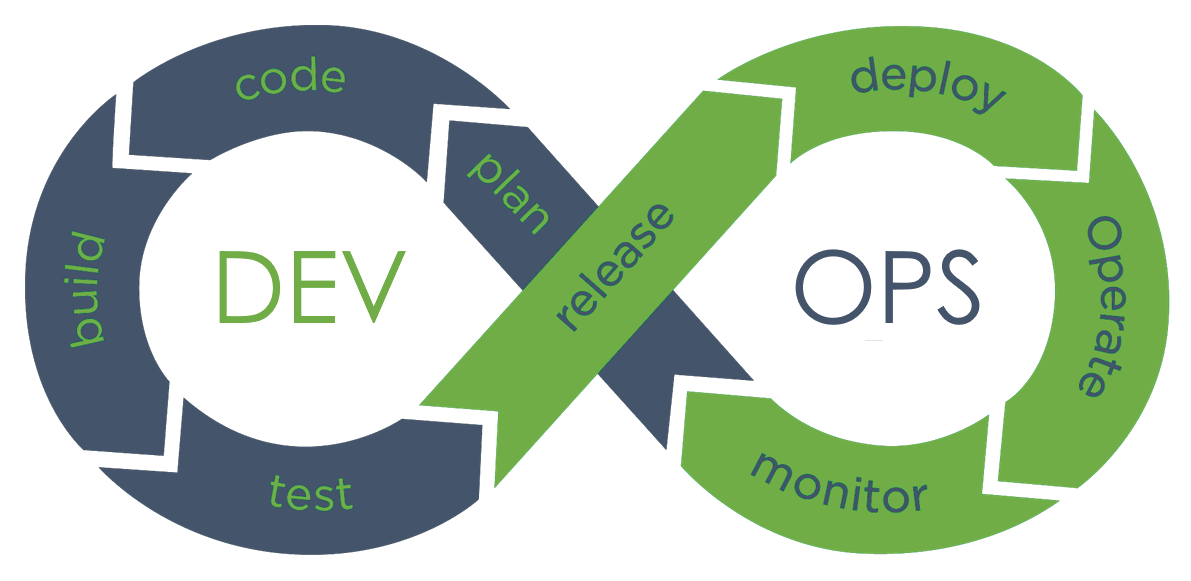
It is important to identify the key test data operations with the intent of standardizing and automating them to align with your broader DevOps and CI/CD practices.
Benefits
- Repeatable, i.e., reliable
- Fluidity, i.e., less time waiting
- Self-serviceable
Anti-Patterns
“The Hero”: Reliance on a team, or individual, that goes to “extraordinary lengths,” usually working lots of hours to help the team both test and deliver within deadlines. However, the heroics — and the reliance on these “heroics” — is continual, and mistakes, due to overwork, are common.
Selective automation: When specific data operations are excluded from automation because the team or individual responsible doesn’t see the value of automation and/or fears that automation may make them redundant.
Data Exemptions
|
GOAL |
Recognizing scenarios when using production data is impactful |
|
PATTERNS |
- Use production data when necessary
- Provide a service request method
|
|
ANTI-PATTERN |
Promoting exemptions as a standard practice |
Patterns
Although not ideal, sometimes we may need to use production data. This may be required during a serious production event, where the use of non-production data may limit test and fix.
Without promoting the concept of “data exemptions” as it is a last resort, provide a service request method where the request can be raised, risk documented, request approved, and length recorded (the window of risk).
Benefits
- Auditability
- Ownership of decision and risk
Anti-Pattern
Promoting exemptions as a standard practice: No individual — other than your customer — has the right to use customer information. This breach of trust should be deemed a last resort and a very rare occurrence.
Data Reporting
|
GOAL |
Understand data operations to make improvements |
|
PATTERN |
Implement automated methods — DataOps and DataSec reporting |
|
ANTI-PATTERNS |
- Not reporting
- Manual reporting
|
Pattern
Implement automated methods so that we can understand our behavior and continually improve. Data reporting can be loosely divided into two camps:
1. DataOps (Data DevOps) Reporting
- Focus on the day-to-day operations.
- For example, for each DataOps Type*:
- Ticket requests
- Lead time (request to completion)
- Execution time
- Frequency
- Success rate
2. DataSec (Compliance) Reporting
- Focus on ensuring regulatory needs of security, compliance, and audits.
- For example:
- Coverage of platforms risk profiled
- Coverage of platforms secured
- Exemption reports
- Measure of operational efficiency
- Measure of security coverage
- Baselines to improve from
Anti-Patterns
Not reporting: If you don’t measure, you will struggle to improve it.
Manual reporting: Attempting to report on DataOps or DataSec manually is destined to fail. The information is too broad and will be moving too fast. Ultimately, the information will fall into disrepair and be unreliable.
